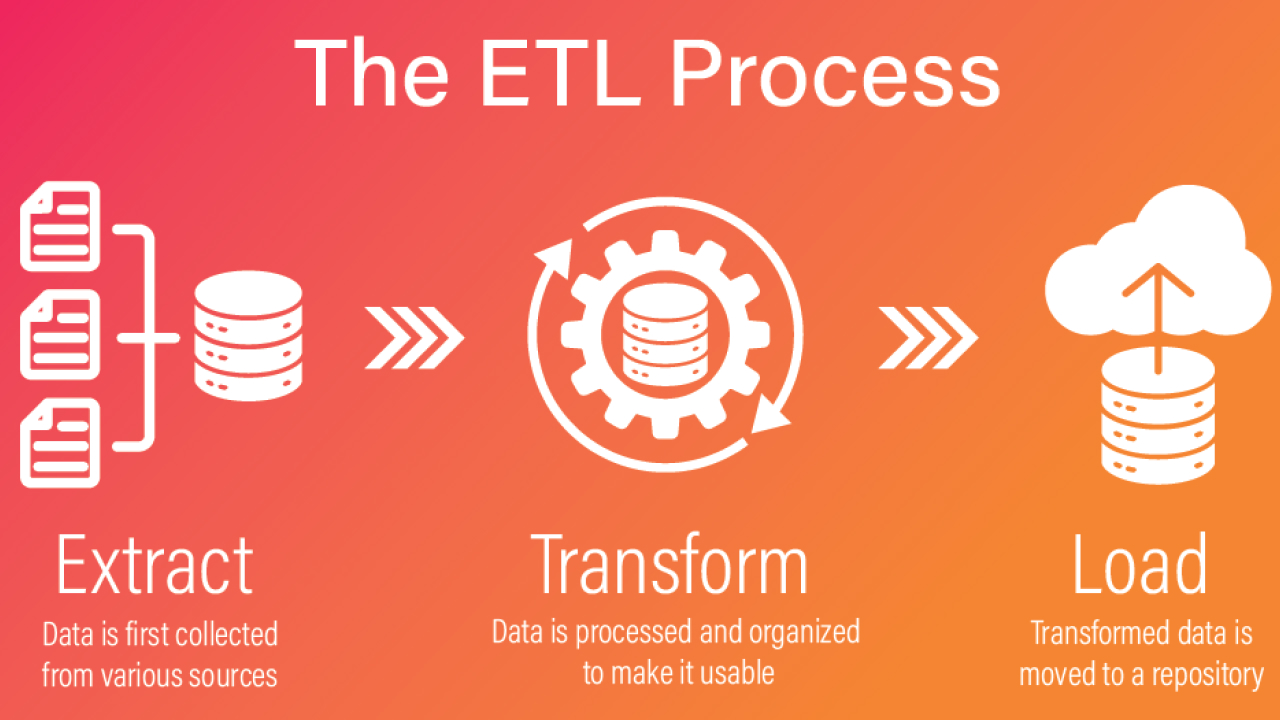Are you planning to convert .NET Framework to .NET Core? In this guide, you'll learn the main benefits of migration, the challenges, and how to solve them.
How to Migrate From .NET Framework to .NET Core
Initially launched in 2016, .NET Core has become the long-awaited next step in the evolution of Microsoft’s .NET technology. It’s given us more capacities for flexible cross-platform development of lightweight applications that don’t make developers go too far in terms of technological complexity.
Still now deemed outdated, .NET Framework is used at the foundation of many companies, startups, and even enterprises. What are they missing out on?
Let’s start from the beginning — why the pressing need to move platforms is there in the first place? Let’s take a look.
Main reasons to convert .NET Framework to .NET Core
The timely .NET Framework to .NET Core migration brings a number of standing-out advantages to the table. From a higher performance cap to wider compatibility bounds to advanced security mechanisms, .NET Core obviously outruns its older counterpart by a vast majority of characteristics.
.NET Framework has evolved into the Core through numerous updates and enhancements designed and implemented for the platform over time. In a nutshell, timely migration updates and scales your company’s tech infrastructure while allowing you to leverage Microsoft’s latest developments.
To get a bigger picture why don’t we go through some specific reasons?
.NET to .NET Core migration cuts costs
.NET Core has proven to be very cost-effective. And migrating from .NET Framework to .NET Core is your best bet for achieving reduced expenses, mostly through improved performance. Applications built with Core are faster and require fewer resources, allowing you to spend less overhead charges for servers.
Being natively integrated with the cloud, Core provides more efficient ways to deploy and manage applications. This integration, combined with the support for containerization and modular app architecture, really turns things around in terms of financial flexibility. Plus, .NET remains open-source and license-free to use.
.NET Core expands functional flexibility
Core is a highly flexible tool for developers for two main reasons. Its cross-platform-ready modular architecture development approach allows developers to handpick the reusable app components, minimizing the app’s overall size while boosting performance. On top of that, app development and deployment processes and resources become that much easier to control and manage when things are done selectively, brick by brick.
Then there’s the open-source nature of the whole platform, which allows the passionate .NET community to come up with unique new solutions and help enhance the technology further.
New tech enables reinforced security
And we’ll tell you why right away — the design of Core enables better control over the dependencies. Again, all due to the modular approach which breaks the application down into components, making the attack surface for most security threats minimal. Today’s encryption algorithms and security protocols improve Core’s reliability further. Beyond that, the platform gets updates and patches to fix new weak points if any.
You get a visible performance boost
.NET Core cranks up the performance cap metrics of the apps you create thanks to a bunch of optimizations. It has a small and lean structure as a framework, allowing for less overhead and lower memory consumption. Then there’s a Just-In-Time (JIT) compilation technique, tiered compilation, and background garbage collection to speed and ease things up for developers.
Built-in cloud features are very promising
.NET Core has built-in features that help with cloud-native application development. For instance, there’s native support for asynchronous programming with cloud resources. Microsoft Azure and all related APIs are supported natively as well. You can package and deploy applications right in the cloud. Add that to the module-by-module development process for the max convenience.
These are the main advantages of .NET Core compared to .NET Framework. The above capabilities encourage many companies and entrepreneurs to migrate NET Framework to NET Core. Now let’s take a look at exactly how we can handle the migration process.
Methods for .NET Framework to .Net Core Migration
How can you migrate from .NET to .NET Core? There are two main options that we get to consider. The final choice depends on your specific goals and needs. Each approach has its benefits and drawbacks. Keep but one necessity in mind — you will need a reliable team of qualified specialists to help you migrate to .NET core.
All in all, you can convert NET Framework to NET Core either automatically or manually.
Automated migration
In this scenario, you can use specialized tools and scripts to migrate from NET Framework to NET Core autonomously, saving time and professional resources. Automated data migration is fast and painless, but it may not guarantee 100% integrity and accuracy of the moved data. An automated approach comes in best for large migration projects, speeding up the process and identifying potential limitations. However, it should always be preceded by thorough testing, optimizing the functionality, performance, and compatibility with the .NET Core environment if needed.
Manual migration
Manual migration is a more detailed and controlled process which usually calls for rewriting or refactoring the codebase. For this, developers analyze the existing code, identify framework-specific features, and rewrite them for compatibility with .NET Core.
Although time-consuming, manual migration allows for more well-rounded optimization and much deeper customization. Developers can work on the business infrastructure performance inside-out, precision-fix bugs, and tailor the migration to specific project needs. It goes without saying that manual migration requires careful planning, testing, and collaboration for feasible results.
Summary: The automated approach is best suitable for large but not completely legacy-driven projects. The manual process in turn will provide a higher quality of migration for more complex cases where in-depth refactoring, customization, or updates may be needed.
Whatever your case may be, you’ll need a professional team that works with different services equally well for either of these two processes.
Key points of the migration process from .NET Framework to .NET Core
Now we won’t try and describe the whole process of migration with its ranging tools, varying scenarios, and multi-faceted tasks. But we must prepare you by outlining the unique stages of switching the .NET generation. So let's take a quick overview of the migration process.
Assess
First things first, the existing .NET-powered system must be analyzed to pinpoint dependencies, architecture touchpoints, and potential compatibility issues.
Here’s what you can do:
- Inventory current systems — list all components, libraries, and dependencies used in the current .NET Framework system.
- Read into the architecture — evaluate the system’s architecture to identify areas that might require major changes.
- Dig for compatibility issues — check for legacy or separate APIs, libraries, and frameworks that are not compatible with .NET Core.
You can also use tools like .NET Portability Analyzer to timely discover and prevent more gaps and issues.
Plan
With the preliminary system assessment takeaways, create a detailed step-by-step migration plan. Make sure to prioritize components based on the complexity and functional impact of each.
Here’s what you can do:
- Define scope — clarify the functional, professional, and financial bounds of the migration project, including which parts of the application will be migrated first.
- Set milestones — mark out milestones and timelines for each phase of the migration.
- Allocate resources — assign tasks and responsibilities to team members beforehand and based on essential plan points.
To build confidence in the prioritization of migration phases and components, try an incremental approach where you start with the least critical tasks.
Update project files
You may need to convert project files to the .NET Core-compatible format. This involves a bunch of tech work for software specialists.
Here’s what you can do:
- Update project structure — modify the project file format from .csproj (used in .NET Framework) to the new .csproj for .NET Core.
- Configure settings — update configuration files and settings to match .NET Core requirements.
Make sure to create a data backup in advance. This is where you can employ a range of automation options granted by Microsoft.
Take care of code changes
In line with the data formats preparation, you may also need to modify the whole existing codebase. This comes as part of manual migration.
Here’s what you can do:
- Refactor code — update or rewrite parts of the code that use legacy APIs or features.
- Remove deprecated APIs — find and remove or replace deprecated APIs and libraries.
- Optimize code — leverage .NET Core out-of-the-box features to optimize performance.
Each code revision should be followed by a review. You should also implement unit tests for refactored code’s functionality.
Update dependencies
As a separate stage, you will need to update or replace third-party libraries to achieve total compatibility with .NET Core. For this, you have to first identify all the dependencies.
Here’s what you can do:
- List out dependencies — list all third-party packages and libraries used in the system.
- Update packages — update or replace packages to their .NET Core compatible versions.
Don’t forget about any custom in-house libraries you might also have in your system — they must be updated as well.
Migrate data
The main phase of .NET migration is, of course, the migration of all the data. The mission is to move the data to the new .NET Core environment as securely, efficiently, and accurately as possible. Specialized pros know how to handle the whole deal — you just need reliable partners.
Here’s what you can do:
- Map out data — create a detailed map of data structures in both the old and new systems.
- Review and test — validate the integrity and accuracy of data post-migration.
Let us stress the importance of backups once more. They will save you from unfortunate asset losses throughout the migration process.
Test things out
Developers must thoroughly test the freshly migrated data. All the migration touchpoints including data integrity, components compatibility, and system responsiveness and performance should be covered with a bunch of both automated and manual tests.
Here are the types of tests you can conduct:
- Unit testing — go through all components one by one for a thorough unit test.
- Integration testing — check how different parts of the application run together.
- Performance testing — track software performance and identify visible bottlenecks.
A special testing environment is usually created to test things out safely.
Educate and train staff
.NET Core’s features, properties, and interface elements may be new to a lot of your existing staff. Everybody must be brought up to date and trained to use the updated system.
Here’s what you can do:
- Launch a workshop — organize training sessions and classes on .NET Core.
- Provide certification — assist developers in obtaining relevant certifications.
- Leverage learning materials — gather and share useful documentation, tutorials, and online courses.
You can set the ground for continuous staff education by turning tech-savvy employees into mentors and encouraging info sharing among peers.
Monitor and optimize
Last but not least, you can now track the operation of an updated system, making necessary changes and improvements where needed.
Here’s what you can do:
- Do performance profiling — use profiling tools to track key performance indicators (KPIs) and pinpoint technological issues.
- Organize error handling — set up error logging and alerting systems to detect and respond to issues promptly.
- Mind user feedback — collect and analyze user feedback to find more ways to enhance.
With the migration implemented and its outcomes tested, all you can do is leverage .NET Core benefits in action and continue to scale.
The most common issues with migrating from the NET Framework to .NET Core
Migrating from .NET Framework to .NET Core has plenty of advantages. However, it’s not devoid of difficulties and obstacles.
Challenges that you need to be ready to handle at any stage:
- Development environment setup (tooling and adoption of IDE extensions, platform configuration, etc.);
- Dependency management (compatibility tracking, NuGet packages, library updates, etc.);
- Security and compliance (efficient use of .NET’s security features, post-migration vulnerabilities, audits, encryption, and authentication, etc.);
- UX/UI changes (user testing, redesign, feedback incorporation, etc.);
- Performance optimization (benchmarking, profiling, customization, etc.);
- Post-migration support and maintenance (monitoring, bug-fixing, workflow tracking, user and tech support, etc.).
All these challenges can be made painless or avoided completely if you take a responsible approach to the migration process. A professional development team at EXB Soft will help you with this.
Bottom line
Having .NET Core as a tech business foundation is a great advantage. The only pain you may have to endure is the migration from the .NET Framework. From API compatibility and third-party library issues to cybersecurity compliance, the whole thing requires a high level of responsibility and tech skill.
So in order to achieve a more functional, scalable, and flexible .NET system, you need specialists to help you. We have the experience of implementing a wide range of cases that tap into all relevant industries and technologies.
A well-done migration will make your software infrastructure more stable, reliable, and future-proof. Let us help you get the most out of .NET Core features today!
F.A.Q
The main benefits of migrating from .NET Framework to .NET Core include improved performance, cost-effectiveness, enhanced security, better cross-platform compatibility, and built-in cloud features. These benefits help reduce expenses, boost application performance, and provide more efficient ways to deploy and manage applications.
Challenges include setting up the development environment, managing dependencies, ensuring security and compliance, handling UX/UI changes, optimizing performance, and providing post-migration support and maintenance. These issues can be mitigated with thorough planning and a professional development team.
.NET Core improves application performance through optimizations such as a lean framework structure, Just-In-Time (JIT) compilation, tiered compilation, and background garbage collection. These enhancements result in less overhead, lower memory consumption, and faster application performance.
The two main methods for migrating from .NET Framework to .NET Core are automated migration and manual migration. Automated migration uses specialized tools and scripts for a faster process, while manual migration involves detailed code rewriting and refactoring for deeper customization and optimization.
Steps include assessing the current system, planning the migration, updating project files, making code changes, updating dependencies, migrating data, testing, educating and training staff, and monitoring and optimizing the system. Each step ensures a smooth and successful migration.
Manual migration is preferred for complex projects because it allows for detailed optimization, deeper customization, and thorough bug fixing. This method ensures that the migration is tailored to specific project needs and provides a higher quality of migration.
A professional development team can help by assessing the current system, creating a detailed migration plan, updating and refactoring code, managing dependencies, ensuring data integrity during migration, conducting thorough testing, and providing ongoing support and optimization. Their expertise ensures a successful and efficient migration process.



